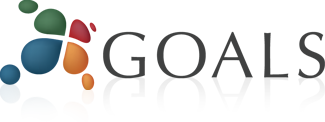Sample Position Statement
The following is a sample position statement on web accessibility that can be used by accreditation agencies for inclusion in their agency documentation. Please feel free to use and adapt this example as you see fit.
Accessibility to Information Communication Technology: A Position Statement
Issue
Equitable access to higher education has long been recognized as a challenge experienced by many individuals, including those from racial and ethnic groups, women, students from low socioeconomic status and students with disabilities. Today, many of the barriers that have historically limited these students' ability to succeed have been removed or reduced.
However, while many obstacles to higher education are less of an issue, for some students with disabilities, simply gaining physical access to a higher education institution is not enough. Many students still do not have equal access to course content.While buildings and physical spaces have been constructed to be accessible, digital materials and instructional websites should likewise be created to provide fair and equitable access to all. Without equal access to digital information, including institutional websites, students with disabilities face unnecessary barriers to their success.
Access to an institution's website is integral to an increasing number of functions in higher education today. These functions go well beyond online courses and course materials: essential activities such as registration, library services, and testing require online interaction.Moreover, most faculty and staff must utilize digital environments and the institutional web in order to do their work and participate in the mission of the institution.
Given the growing reliance on digital environments, it is essential that all students, faculty, and staff members have the access they need to succeed. This includes students, faculty, and staff members with disabilities who may be dependent on the accessibility and usability of those environments to participate fully in higher education and the activities of their institution.
Moreover, student learning outcomes are strongly affected by accessibility. If students with disabilities do not have equal access to educational materials, their outcomes will suffer. Digital materials that are made accessible after-the-fact do not provide an equivalent educational experience. Students who cannot readily access information and materials are put at a serious disadvantage during a period in education when just-in-time learning, communities of practice, and critical thinking pedagogies proliferate. In addition, providing accessible digital materials and processes only when students, faculty, or staff request them is an inefficient and costly way to make content accessible, especially when one considers that an institution has an affirmative obligation to plan in advance of a need for an accommodation.Since it is reasonable to think persons with disabilities will be visiting web content, it should be made accessible before they need this content.
A commitment to digital accessibility also provides valued added benefits to a number of other student groups. This includes those for whom English is a second language; students with different learning styles or who prefer multimodal learning; and those who are working on older equipment or in environments where they cannot fully utilize their equipment (e.g., in places where it is difficult to hear or where sound is not allowed, captioned videos can be helpful).
Appropriate Approaches
An effective institutional tactic for web accessibility is a whole system approach.The interconnected nature of the web means that accessibly designed webpages are still inaccessible if a student must navigate through the architecture of an inaccessible institutional web to reach them.However, a system-wide approach requires administrative endorsement and leadership.Initiatives or policies set and supported by top level administrators will help to promote a culture of inclusion and digital accessibility across the institution.
Web accessibility does not just happen; it requires planning, resource provisions, personnel and an ongoing review of progress. Any plan or policy should start with the selection of a technical standard widely supported in the field (e.g., Section 508 is created and adopted by the U.S. federal government and WCAG 2.0 is created by the W3C and accepted by the international community). Then, accessibility efforts should be informed by the best practices in web development.
As legislation changes and more institutions recognize the benefits of digital accessibility, the number of resources available to assist institutions to promote and maintain web accessibility have grown and will continue to do so. Furthermore, while each institution is different, a great deal can be learned from the experiences of other member institutions.
Agency's Stance
An institution that creates and maintains an accessible digital environment underscores its commitment to diversity, inclusion, and student outcomes. It is likely to also help fulfill the mission of the institution.
A central tenet of this agency's philosophy is that institutions should dedicate themselves to ensuring the quality and effectiveness of their programs and services.Administrative and educational programs and services can only be truly effective if they provide support for all, including those with disabilities.
Providing an inclusive and supportive environment for teaching and learning is a critical part of postsecondary education.Therefore, this agency supports and encourages its member institutions to take a leadership role in developing, procuring and maintaining accessible digital materials and institutional web content.


